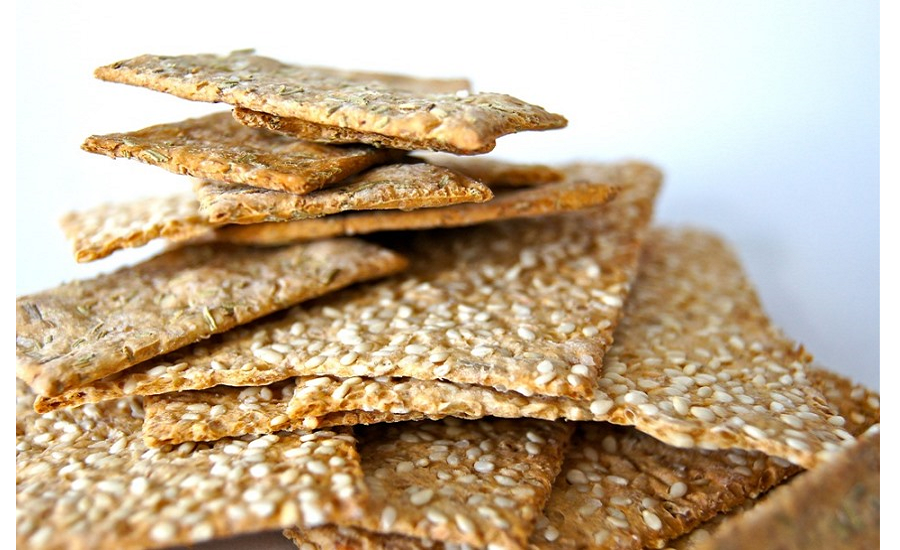Preservation and Convenience for the Next Class of Snacks

The global market for savory snacks is expected to grow from $94.5 billion in 2015 to $138.2 billion by 2020.[1] Snacks make up 11 percent of meal occasions in the U.S., according to Nielsen research, and consumers are not just reaching for potato chips and cookies.[2] Americans are becoming increasingly concerned about healthy eating and what goes into their food; 54 percent say they are trying to eat as many vegetables as possible. Shoppers in Europe are similarly concerned about the healthfulness of their snacks. Two-thirds of Europeans enjoy savory snacks like chips and nuts at least once a week, and 11 percent eat them several times a day. More than one-third of European survey participants care more about the presence of natural ingredients in their food than they do about fat content or calorie count, or even the presence of organic ingredients.
As buyers are more attuned to healthful ingredients, the definition of what foods fall in the snack category is changing. The recent emergence of meat bars as a snack category is one illustration of this trend. Wild Zora is a growing brand producing Meat & Veggie Bars in flavors such as Mediterranean Lamb with Spinach, Rosemary and Turmeric. Wilde Boldr offers slow-roasted meat bars made beef, turkey, and chicken. The brand recently introduced a line of Chicken Chips, described as “the ultimate portable protein.”
Millennials are even more concerned with health than their baby boomer counterparts. According to a 2016 Canadean survey, 57 percent of shoppers said health and well-being are important, but for consumers aged 25 to 34, that figure jumped to 65 percent.[3] Brands are responding to this demand by producing snacks that contain whole ingredients customers recognize. For example, Mediterra, a Mediterranean-inspired snack company, released a savory bar that includes Kale and Pumpkin Seeds, Bell Peppers and Green Olives, and Sundried Tomato and Basil.
With these changes in the snack industry, brands can turn to flexible packaging designed for on-the-go lifestyles that keep snacks fresh and brings added convenience to today’s busy buyers. The baking and snack industry has focused on a number of new trends and technologies that offer solutions – such as barrier films, zipper closures and airtight seals that help keep the next generation of snacks fresher for longer. Baking and snack professionals will be able to see these innovations and more at PACK EXPO Las Vegas 2017 (Las Vegas Convention Center; Sept. 25–27).
Flexing Packaging’s Muscles
In 2017, the food and beverage industry will welcome more products that emphasize plant-based key ingredients, according to Mintel’s 2017 Global Food and Drink research report.[4] More packaged snacks will leverage fruits, vegetables, nuts, seeds, grains, botanicals and other plants as a way to align with buyers’ health and wellness priorities. Flexible packaging allows brands to include a clear window so that end users can see that the food they are buying matches what is on the package, explained Sal Pellingra, vice president of Innovation and Technology at ProAmpac (Booth #S-6332).
The growth in demand for flexible snack packaging in the United States is driven by millennials, says Pellingra. Millennials find the packages more modern than rigid packaging, and marketers embrace the format to attract this audience. Flexible snack packaging is also being widely adopted in Asia, where store shelves with liquid pouches are the norm, he added. Developing countries like Thailand never had an infrastructure in place for rigid packaging, so as they develop packaging systems they turn to flexible packaging because it is convenient and environmentally friendly.
“Consumer satisfaction scores have improved when folks change from rigid to flexible packaging solutions,” said Bill Kuecker, vice president of Marketing at Mondi (Booth #S-6715). “One of the trends we are seeing is the need for packaging that pops in a lot of different display environments, because one package is being displayed across different store formats,” Kuecker said. “The right packaging choice allows more flexibility on how manufacturers go to market.” And since 48 percent of shoppers purchase healthy snacks from a convenience store rather than a grocery store, at least occasionally, the ability to display in different store formats is an advantage for snack brands.[5]
As more snack brands move to flexible packaging, packaging manufacturers are developing technologies that can adapt to the changes in demand. For example, the XYRJ VFFS Bagger by Triangle Package Machinery (Booth #C-2614) is a continuous motion machine with a rotating sealing jaw that can make pillow bags or three-sided pouches. The rotation gives snack brands the option to package both in a traditional pouch or, when the machine is rotated, a three-sided pouch with zipper. “Many customers are buying the XYRJ without having the need for it today,” said Ralph Hernandez, vice president of Sales & Marketing at Triangle Package Machinery. “Knowing in the future they have the option is a huge benefit.”
Fresh Solutions
When shoppers seek products with fewer preservatives, snack manufacturers must respond with packaging that maintains freshness and extends shelf life, as this offers benefits for both consumers and brands. Preservation is a significant driver of profitability for baked goods brands, explained Kuecker. Limited-shelf-life products, like fresh baked goods or perishable snacks, incur economic losses due to a combination of discards, discounts and thefts. Packaging that increases shelf life can help reduce these losses while allowing retailers to feel confident stocking larger displays of baked goods. Depending on the incumbent packaging material, switching to flexible packaging can double the shelf life of packaged foods, said Kuecker.
“It’s not just about wrapping things in the least costly single layer structure anymore,” says Heather Chandler, president, Sealstrip (Booth #C-3502). Barrier properties in today’s packaging can help foods stay fresh for longer. Brands can also turn to packaging solutions that leave less air in a package after the buyer has enjoyed part of the snack, explains Chandler. Sealstrip produces Peel&Seal and FreshPak, pressure-sensitive tape closures similar to a zipper that run as part of a flexible bag when the package is formed. Sealstrip's features are used by household brands like Frito-Lay and Mission Foods in markets around the world, with applications including bags of chips, donuts, tortillas and cookies. The airtight seal keeps food from going stale, so customers can store it for longer.
Chandler has observed a push in Europe and Australia for a reduction in preservatives, leading brands to improve packaging so foods with less preservatives have a longer shelf life. Brands in developing countries like Pakistan, Thailand and India seek longer shelf life as their packaging systems become increasingly automated and food travels greater distances, she added.
Next-Level Convenience
As people adopt more active lifestyles, 59 percent of shoppers say it is very important that snacks do not become too large. [6] Recent years have seen a push for portable, portion-controlled snack sizes. According to Mintel, the number of global food and beverage launches with on-the-go claims increased by 54 percent in 2016.[7]
“Don’t underestimate the consumer’s need and desire for portable portions,” advises Pellingra. “Consumers will pay more for it. They want to take food on the go, and they want healthy choices.” In fact, a Nielsen study found that optimized packs generate an average 5.5 percent increase in sales revenue.[8]
Pellingra recommends that snack manufacturers take advantage of any opportunity to make their snacks more convenient for end users, including resealability and microwave-safe packaging. For example, ProAmpac’s E-Z SnackPak™ by Ampac offers a new single-serve packaging pouch that becomes a tray upon opening. The E-Z SnackPak’s tetrahedron shape stands out on the shelf and provides an added, unexpected convenience. “There’s a lot of excitement around packages that can differentiate and offer some functionality,” said Pellingra.
Creativity in the Snack Industry
Snack manufacturers are leading the push to meet changing demands for convenient, portable packaging that keeps their healthy food fresh. Innovations in the packaging industry offer snack brands more advantages than ever before when it comes to capturing and keeping shoppers’ attention. As brands enter the market or adapt to healthier demands, packaging can help manufacturers get their brands noticed and prompt repeat sales. Attendees at PACK EXPO LAS Vegas 2017 (co-located with Healthcare Packaging EXPO) will have the chance to explore state-of-the-art packaging technologies, equipment and materials up close and in person. More than 2,000 exhibitors will offer solutions to improve productivity, efficiency and security. To register, visit http://www.packexpolasvegas.com/.
[1] http://www.cspdailynews.com/category-news/snacks-candy/articles/8-snack-trends-watch-2017#page=0
[2] http://www.nutraceuticalsworld.com/issues/2017-01/view_features/healthy-snack-trends-to-chew-on/
[3] http://www.nutraceuticalsworld.com/issues/2017-01/view_features/healthy-snack-trends-to-chew-on/
[5] http://www.cspdailynews.com/category-news/snacks-candy/articles/8-snack-trends-watch-2017#page=0
[6] http://www.cspdailynews.com/category-news/snacks-candy/articles/8-snack-trends-watch-2017#page=0
Looking for a reprint of this article?
From high-res PDFs to custom plaques, order your copy today!





